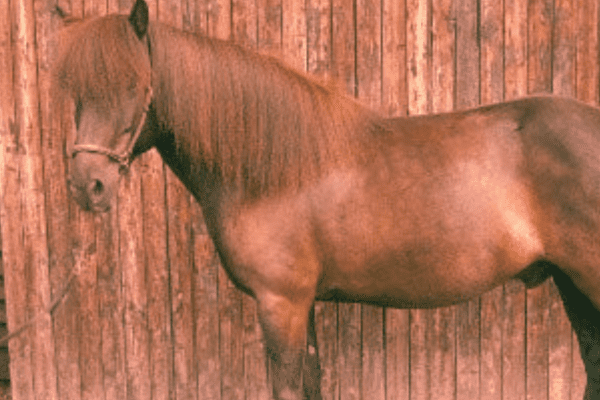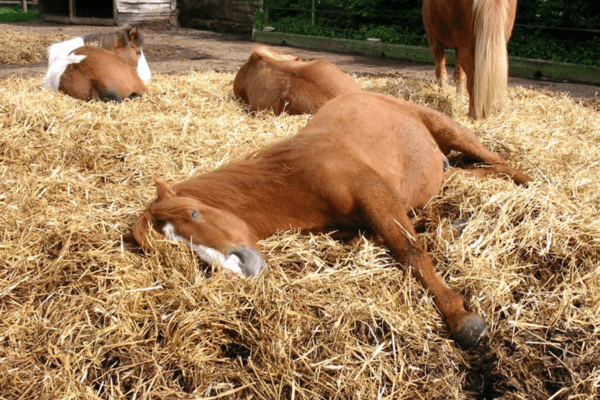The Aegidienberger breed, a distinguished and modern addition to the equine world, originates from Germany. This breed is a deliberate and skillful cross between the spirited Peruvian Paso and the hardy Icelandic horse. The Aegidienberger is especially celebrated for its ‘tölt’ gait, a smooth and rhythmic movement that highlights its unique lineage. Additionally, this breed is often praised for its exemplary character, combining the best traits of its parent breeds to offer a balanced and delightful riding experience. As a symbol of cross-cultural equine breeding, the Aegidienberger stands out for its adaptability, grace, and exceptional demeanor.
History:
The Aegidienberger horse, an exciting addition to the world of equine breeding, represents an intriguing blend of genetics, purpose, and innovation. Though relatively recent when compared with more ancient breeds, its history is filled with intentional design features that foster adaptability while reflecting an in-depth knowledge of both genetics and rider needs.
Origin and Genetic Composition
Originating as part of an intentional crossbreeding experiment, the origins of this breed date back several years.
Combining the endurance and hardiness of Icelandic horses with the elegance and smooth gait of Peruvian Paso horses.
The Aegidienberger has an exact genetic makeup, with 62.5 percent from Icelandic horses and 37.5 from Peruvian Paso horses having an influence.
Breeding Process and Development
Walter Feldmann and Walter Junior laid the groundwork for this breed’s creation, envisioning a horse with lofty gaits capable of adapting to harsh natural conditions.
Initial crossbreedings involved breeding two pureblood Peruvian Paso horses with pureblood Icelandic mares to produce F1, the initial generation (F1).
This F1 generation was then crossed with another Icelandic horse to produce the R1 lineage.
Interbreeding between F1 and R1 generations resulted in what we know of today as Aegidienberger horses.
Recognition and Studbook Establishment
1994 marked a crucial turning point in Aegidienberger history with its official recognition and establishment of its Studbook.
Ultimately, this formal recognition was testament to the breed’s unique traits and potential as an equestrian competitor.
Current Role and Adaptability
Modern Aegidienberger horses have made themselves indispensable in both agricultural work and pleasure riding.
Their flexible designs and robust lineage lend themselves well to various activities and environments.
This breed is especially esteemed for its smooth ‘tolt’ gait, an efficient movement perfect for long rides.

Physical Characteristics:
The Aegidienberger horse breed stands between 13 and 15 hands high, and exhibits both sturdy, compact features of an Icelandic horse while also possessing refined elegance and smooth gaits characteristic of Peruvian Paso horses. This combination creates an agile yet strong horse suitable for various riding disciplines.
One of the Aegidienberger’s signature features is its gait. This breed’s Icelandic ancestry instilled it with an ability to perform the “tolt,” a comfortable four-beat gait which offers a comfortable ride inherited by this Aegidienberger breed.
Furthermore, some also display the Peruvian Paso lineage’s silky four-beat gait known as paso llano which makes for an exquisite experience especially during long distance treks or therapeutic riding programs. All this makes the Aegidienberger an ideal companion!
Temperament:
The breed’s temperament is another highlight, combining the Icelandic horse’s friendly and cooperative nature with the intelligence and sensitivity of the Peruvian Paso. This makes the Aegidienberger an excellent partner for both novice and experienced riders. They are known for their willingness to learn, adaptability, and strong bond with their human companions.
Appearance-wise, Aegidienbergers come in various colors – bay, chestnut, black and grey are the primary hues; their coat can range from sleek and fine to thick and luxurious depending on their genetic make up.


